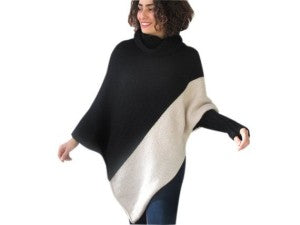Hey, Dancers!
When you’re talking about the art of gracefully moving your body to a rhythm (or lack thereof), it’s very important that the attire you select will allow for the freedom of movement you require to perform your art. From leotards to tights and capris to ballet slippers, there are many items of dance wear to consider, but of all the countless options available, none are so iconic as the tutu. 
Tutus have become an essential part of the ballet scene with a world of different styles and alterations. They have been made of materials such as tarlatan, muslin, silk, gauze, nylon, and a material called tulle—the most commonly used material at one time. Nobody knows quite where this flashy dance skirt got its appropriately flashy name, but it’s theorized to have derived from the word ‘tulle’, the material from which it was made.
In the Paris Opera, 1832, a ballet dancer by the name of Marie Taglioni debuted a gauzy white skirt that cut off at her ankles and, thanks to its bell shape, allowed for the freedom of movement she needed to perform. It was made by French designer of the Romantic Period, Eugene Lami.
There have been a number of different takes on the general tutu design since its first creation. Fashion designers from like Cecil Beaton from England, Christian Lacroix from France, and Isaac Mizrahi from the United States have all designed their own look for the tutu. This garment has undergone a number of revisions that have continued to shorten the length until the arriving at the Classical tutu design which reveals the entire leg.
For those who aspire to be a ballet dancer as well, shop Everything Summer Camp to find a tutu for you…uh—yourself. Check it out by clicking right here and, as always, thanks for reading, Camp Fans!
- John




 for soldiers in the Civil War. Not only would they use their ponchos for clothing, but they proved handy as a ground sheet to sleep on as well.
for soldiers in the Civil War. Not only would they use their ponchos for clothing, but they proved handy as a ground sheet to sleep on as well. simple sheet shape hasn’t changed, but the material these fashionable ponchos are made from has. They can be knit from wool or yarn or any number of materials.
simple sheet shape hasn’t changed, but the material these fashionable ponchos are made from has. They can be knit from wool or yarn or any number of materials. years before that! Even older is a game called Senet that they played in Predynastic Egypt which makes it the oldest game as far as we know.
years before that! Even older is a game called Senet that they played in Predynastic Egypt which makes it the oldest game as far as we know. Since then, darts seem to have been a common game found in pubs across the European continent, yet, we only need to travel back less than 200 years for what we know to be the official start for the game of Darts. Records have been found as early as 1837 in which an adaptation of Darts was developed called “Puff and Dart”. The game involved a hollow cylinder and much lighter darts that were blown at a target instead of thrown.
Since then, darts seem to have been a common game found in pubs across the European continent, yet, we only need to travel back less than 200 years for what we know to be the official start for the game of Darts. Records have been found as early as 1837 in which an adaptation of Darts was developed called “Puff and Dart”. The game involved a hollow cylinder and much lighter darts that were blown at a target instead of thrown.
 tes. It was chosen to represent the freedom, strength, and independence of American life. At the time, the Bald Eagle was thought to inhabit exclusively the North American continent and—despite Benjamin Franklin’s lobbying for the turkey–the strength and majesty of the Bald Eagle won this bird its place to represent our nation.
tes. It was chosen to represent the freedom, strength, and independence of American life. At the time, the Bald Eagle was thought to inhabit exclusively the North American continent and—despite Benjamin Franklin’s lobbying for the turkey–the strength and majesty of the Bald Eagle won this bird its place to represent our nation. blic. In order to gather the colonials in the town center, they rang the Liberty Bell. Still in existence more than 240 years later, The Liberty Bell still exists to this day and can be seen on display at the Liberty Bell Center in Pennsylvania. It was cracked some time in the 1800s (with vague record) but continued to travel the country for town gatherings on the Fourth of July until 1915.
blic. In order to gather the colonials in the town center, they rang the Liberty Bell. Still in existence more than 240 years later, The Liberty Bell still exists to this day and can be seen on display at the Liberty Bell Center in Pennsylvania. It was cracked some time in the 1800s (with vague record) but continued to travel the country for town gatherings on the Fourth of July until 1915. of our nation’s most recognizable monuments. Lady Liberty was constructed in France as a gift to the U.S. Built of a steel frame and covered in sheets of copper the statue took about a decade to be completed. It was then disassembled and shipped to the New York Harbor where it was then put back together again over the course of several months. Designed after the Roman goddess, Libertas, she continues to be a strong symbol of our country’s freedom.
of our nation’s most recognizable monuments. Lady Liberty was constructed in France as a gift to the U.S. Built of a steel frame and covered in sheets of copper the statue took about a decade to be completed. It was then disassembled and shipped to the New York Harbor where it was then put back together again over the course of several months. Designed after the Roman goddess, Libertas, she continues to be a strong symbol of our country’s freedom. Ross Flag or Colonial Flag, the American Flag was changed more than 25 times as stars continued to be added as territories were annexed into states. We finally designed our modern flag in 1960 after Hawaii, our 50th state, was granted its statehood.
Ross Flag or Colonial Flag, the American Flag was changed more than 25 times as stars continued to be added as territories were annexed into states. We finally designed our modern flag in 1960 after Hawaii, our 50th state, was granted its statehood.



